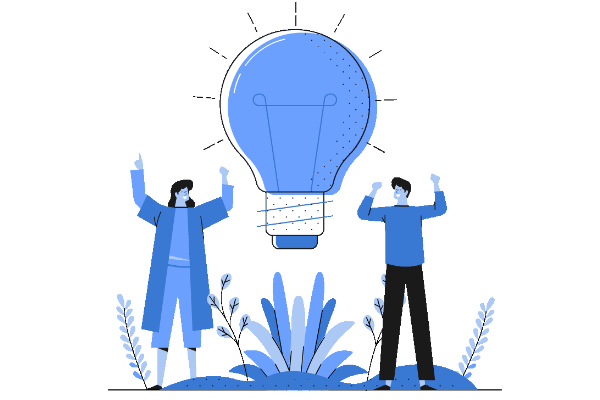Nordgren and Lucas call this “creative-cliff illusion”.
What’s more, they found, the illusion is self-defeating. The more people believe in it, the fewer creative ideas they generate. But with experience comes wisdom, Nordgren and Lucas learned: people who do lots of creative work do not fall victim as often to the myth of declining creativity.
“People think their best ideas are coming fast and early,” Nordgren says. In fact, “you’re either not seeing any drop-off in quality, or your ideas get better.”
Nordgren believes bringing attention to the problem can help people unlock new ways of thinking. “People don’t maximise their creative potential, and part of that is because of these beliefs,” he says.
Creativity Increases as You Brainstorm
Nordgren and Lucas began by recruiting a group of 165 online participants, all of whom had previously worked at charitable organisations, to complete a five-minute brainstorming task. Before they got started, participants were asked to predict their creativity during each minute of the task.
Next, participants set to work generating ideas for how a charity could increase donations. As motivation to keep the juices flowing, the researchers told participants they would be entered in a lottery to win $50 for each idea they came up with.
Then, Nordgren and Lucas recruited a new group of online participants to rate the creativity of the ideas the first set of participants had generated.
Participants in the brainstorming task gave faulty predictions about their own creativity, the researchers’ analysis revealed. While people thought they would become less creative as the session went on, the opposite was true: their creativity—as rated by the second group of participants—actually increased.
Confusing Productivity with Creativity
Research demonstrates that the creativity of people’s ideas does not follow the same negative trajectory as productivity. Whereas productivity tends to steadily decline across an ideation session, creativity tends to increase or remain consistent.
Nordgren and Lucas suspected people confuse creativity with the ease of generating ideas. For many of us, early ideas come quickly, while later ideas prove more elusive as the brainstorm slows to a brain drizzle. This experience of difficulty could easily be misinterpreted as a decrease in the quality of ideas.
“Our best ideas are there. They just require more digging.” — Loran Nordgren
As people engage in creative tasks within their professional and personal lives, they pick up creativity-relevant skills and strategies that help them to work
through creative problems and generate creative ideas. These include strategies for thinking more broadly, making unusual associations, and even the simple belief that one is a creative individual . In the research conducted those individuals who performed high levels of creative tasks on a regular basis were less likely to be susceptible to the “cliff illusion”.
Actions to Enhance Creativity
- Don’t undervalue the “ideation” process. This is not the place to interrupt flow. The more time spent in the is phrase the better.
- Brainstorming in a group is often not conducive to an “aha” moment. It is better to give people time to think about the problem over time and then come together with ideas.
- Ensure you have definite the problem and are not jumping into solutions or trying to solve the wrong problem.
- Ensure psychological safety in brainstorming sessions or ideation sessions.
- Keep going but provide some brain food – water and fruit.
The Neuroscience of Creativity
Creativity is the generation of ideas that are novel and useful. Research finds that, when generating solutions to a creative problem, people typically do not generate their most creative ideas first. Instead, creative ideas tend to emerge over time, such as over the course of an ideation session or even over the course of a career. One reason for this time course is because of the cognitive processes that underlie idea
generation itself. New ideas are generated by integrating and recombining knowledge in working memory. When solving a new problem, the information that comes to mind first (i.e., is the most cognitively accessible) tends to draw on common and obvious cognitive associations (shortcuts), which tend to result in more common—and less creative—ideas. After working on the problem for a period of time, people begin to draw on less common associations and less obvious approaches and, ultimately, arrive at more creative ideas.
To read the full research paper visit here : The creative cliff illusion | PNAS\
Original article by Susie Allen can be found here: Keep Brainstorming—Your Best Ideas Are Still to Come (northwestern.edu)

